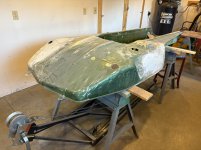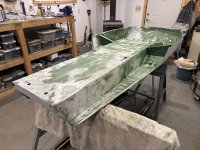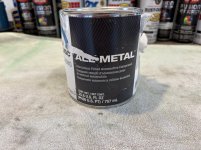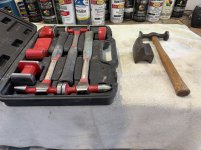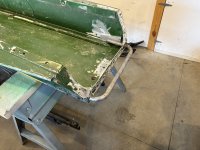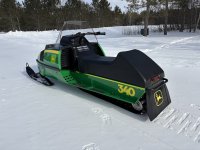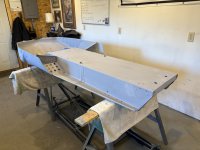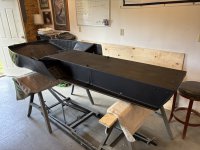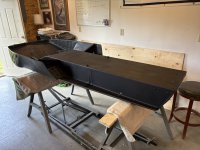skiroule
Well-known member
For some time, I’ve been thinking that the shop is missing something. I’m a bit of a slow learner so it took awhile but Gary’s post finally lit the lamp. It needs a Hamm’s banner. I’ll be working on it.
Whenever I look at the beatings these chassis took, I can’t help but think about the stories that some of these dents and hack repair jobs could tell.
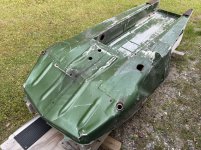
I agree with your preference. I can’t even be an influencer at home, much less out in the online forum world.I was going to write something smarta$$ like your an “influencer” and we are your “followers”, but, I prefer guys enjoying shop talk and watching a skilled craftsman at work.
The truth be told, I had a slight head start on the Cyclone earlier this summer. At the Boondock Inn vintage event last year, I promised some of my John Deere enthusiast friends that I would have a re-done Cyclone 440 at the event next year so I’ve been nibbling at it when time permits. Otherwise, I knew I could never fulfil that promise. Of course, adding the Chaparral to the mix really spiced things up, which is why I decided to document the progress here.Well, your not wasting any time. Quoting a military phrase, "As you were".
Whenever I look at the beatings these chassis took, I can’t help but think about the stories that some of these dents and hack repair jobs could tell.

Last edited:

